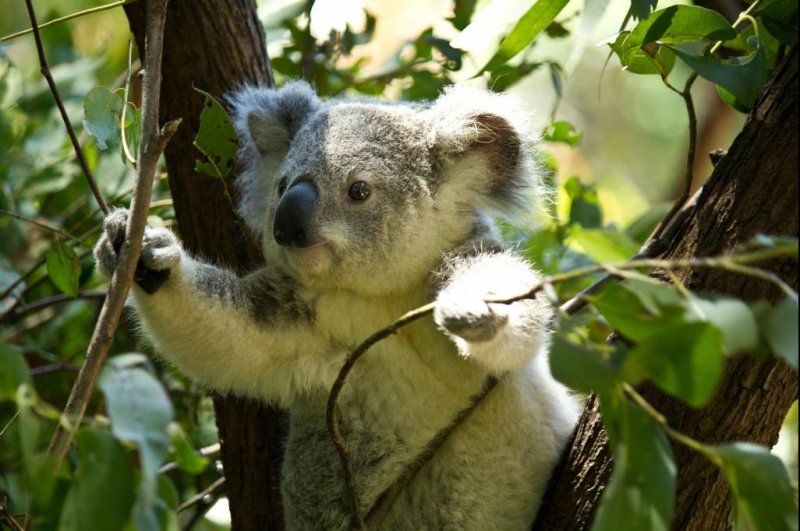The koala-counting drones were faster and more accurate than human spotters. Photo by QUT
March 1 (UPI) -- Researchers have trained drones outfitted with infrared sensors to recognize a koala bear's heat signature. Wildlife managers and biologists are using the technology to accurately and efficiently monitor koala populations in Australia.
An algorithm processes the drone's infrared readings and determines whether the heat signatures belong to a koala or some other animal. Researchers plan to eventually train algorithms to recognize the heat signatures of other animals, too.
In the future, the drone and infrared technology could be used to track a variety of animals, including both threatened and invasive species.
In a proof-of-concept study, scientists used a drone to count koalas already tagged with radio collars. As a result, scientists were able to confirm the accuracy of the survey method.
Scientists have previously used drones to count animals like seals and sea lions on beaches.
"A seal on a beach is a very different thing to a koala in a tree," Grant Hamilton, a biological scientist at the Queensland University of Technology, said in a news release. "The complexity is part of the science here which is really exciting."
Researchers detailed their feat this week in the journal Scientific Reports.
"Nobody else has really managed to get good results anywhere in the world in a habitat this complex and in these kinds of numbers," Hamilton said.
Researchers used their new drone technology during Queensland's winter months, when the difference between the koala's body heat and the surrounding temperature would be greatest. Because researchers knew the location of the geotagged koalas, they were able to confirm that the drone successfully spotted and recognized the koalas.
"On average, an expert koala spotter is going to get about 70 percent of koalas in a particular area," Hamilton said. "We, on average, get around 86 percent. That's a substantial increase in accuracy that we need to help protect threatened species."
The new study showed koala-counting drones are faster, cheaper and more accurate than human spotters. However, researchers claim human-led surveys will still need to be used to provide context and confirm the reliability of drone-based population surveys.
"This is a powerful technique in the right circumstances," Hamilton said.















